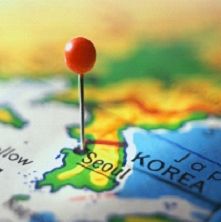By Sarah-Claire Jordan
 There are about 80 million people in the world today who speak Korean, most of whom reside in the Democratic People’s Republic of Korea, or North Korea, and the Republic of Korea, or South Korea. Since South Korea is more open to the rest of the world and thus more likely to use products and services from other countries, the majority of localizing in Korean has used the South Korean variety of Korean. That is basically the language variety for the accessible Korean market, so localization specialists and marketing professionals focus on that.
There are about 80 million people in the world today who speak Korean, most of whom reside in the Democratic People’s Republic of Korea, or North Korea, and the Republic of Korea, or South Korea. Since South Korea is more open to the rest of the world and thus more likely to use products and services from other countries, the majority of localizing in Korean has used the South Korean variety of Korean. That is basically the language variety for the accessible Korean market, so localization specialists and marketing professionals focus on that.
Regardless of which type of Korean is used in a localization project, there are several things that need to be taken into account regarding the language. Probably the most important thing is the fact that there are seven different levels of formality used in Korean. This means that localization experts and those they work with need to be extremely aware of who their target audience is in order to know exactly which level of formality to use. This gets complicated when your target audience is mixed, as in more than one age group, so sometimes you have to just go for formal.
Continuing with the levels of formality, the seven that are generally used when speaking aren’t always used in writing. Often, only two levels are seen in writing, and this can become an issue when taking written content and turning it into a script or audio content. A good way to deal with this issue is to go to either extreme in the content writing. If you are not 100% sure what your target audience’s formality level would be, stick with the most formal level. If you know exactly who you are targeting, then pick the formality level that would work for them and use that.
Localizing in Korean with written content involves yet another challenge: space. Since advertising in Korea usually uses one of the formal levels of formality, which involves more words (think speaking to a king or queen compared to speaking to a “commoner”), content that took up a certain amount of space in English will probably need more space when localized into Korean. This can affect the format and general layout of the content, especially if it is a website or advertisement in a magazine or newspaper. If you work closely with a Korean localization expert, they will guide you and show you exactly how to manage this space issue.
Finally, be wary, and aware, of loanwords. Back in the day, loanwords were borrowed from Chinese, but what you are more likely to see nowadays is the use of English words, especially terms used in fashion, medicine, sports, IT, and mechanical engineering. Many words that are commonly used in English in these fields have made their way into Korean, and are not translated into Korean. They are used just as they are, in English, and they stay in English. If you do end up translating any of them by accident into Korean, you will have complaints from your client, saying the translation doesn’t seem authentic without the words remaining in English.



